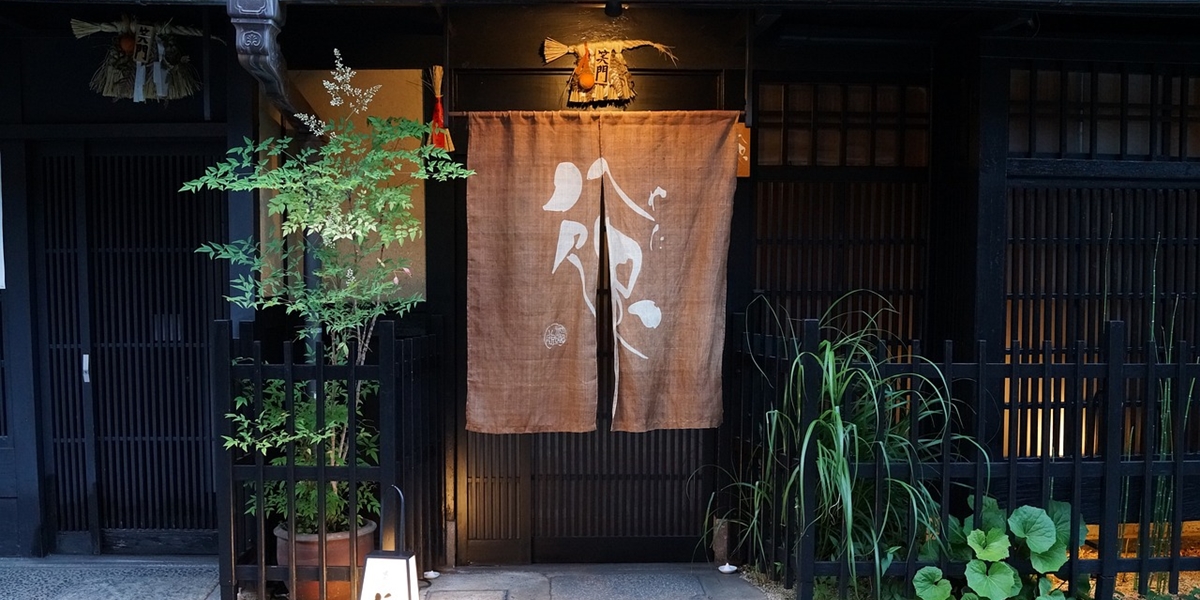5 Recommendations for Slice of Life Chinese Dramas in 2024, Exciting Stories Full of Life Lessons
Interested in watching the latest slice of life Chinese dramas in 2024? If so, check out the following list of recommendations and brief reviews.

Kapanlagi.com - Learning Japanese can be a challenge, especially for beginners who are not familiar with the unique structure and rules of Japanese grammar. This article will provide a detailed explanation of the correct Japanese grammar, specifically designed for beginners.
We will discuss various important aspects such as sentence structure, particle usage, verb conjugation, and adjectives, as well as provide easily understandable examples. With a strong basic understanding, KLovers will be more confident in communicating in Japanese.
Let's start learning Japanese with a complete and clear guide to the correct Japanese grammar for beginners. Complete with examples. Check it out, KLovers.

Illustration (credit: pixabay.com)
To understand Japanese grammar, first KLovers must know the sentence structure in Japanese. Usually, this structure follows the order of Subject-Object-Verb. Subject and object are often omitted if they are clear from the context. This means that the subject of the sentence appears first, followed by the object, and then ended with the verb.
This is different from English, which usually follows the Subject-Verb-Object (SVO) pattern. Learning this pattern is an important step in understanding and forming sentences in Japanese. To better understand the sentence structure in Japanese, there are several simple examples that KLovers can know. Let's take a look at the following example:
"Watashi wa ringo o tabemasu."
Translation: I eat an apple.
Analysis:
(watashi) = I (Subject)
(wa) = Subject/topic particle
(ringo) = Apple (Object)
(o) = Object particle
(tabemasu) = Eat (Verb)
1. Subject: The part of the sentence that performs the action. In the example, "watashi" means I.
2. Object: The part of the sentence that receives the action. In the example, "ringo" means apple.
3. Verb: The action performed by the subject. In the example, "tabemasu" means eat.
4. Particle: Particles are small words that do not have full meaning but mark the function of words in a sentence.
Next, there are particles that are part of Japanese grammar. Particles in Japanese are small words used to indicate the relationship between words in a sentence. Particles do not have their own lexical meaning, but they have an important function in marking subjects, objects, time adverbs, places, instruments, purposes, and possession relationships.
Particles in Japanese also provide nuances or emphasis in a sentence. Particles in Japanese help learners determine the structure and meaning of sentences in Japanese. Here are some examples of main particles along with example sentences:
1. (wa): Marks the subject or topic of the sentence.
"Watashi wa gakusei desu" - I am a student.
2. (ga): Marks the subject in a sentence that provides new or specific information.
"Inu ga suki desu" - I like dogs.
3. (o): Marks the direct object of a verb.
"Hon o yomimasu" - I read a book.
4. (ni): Marks the destination or time.
"Gakkou ni ikimasu" - I go to school.
"Sanji ni kimasu" - I will come at 3 o'clock.
5. (de): Marks the place where the action takes place.
"Toshokan de benkyou shimasu" - I study at the library.
6. (no): Marks possession or the relationship between nouns.
"Kare no hon desu" - This is his book.

Illustration (credit: pixabay.com)
Then there is Japanese grammar using verbs. Verbs in Japanese are words used to indicate actions, states, or events. Verbs can undergo changes in form (conjugation) to indicate aspect of time.
For example, past, present, or future, politeness, negation, as well as various other grammatical aspects. Verbs are the core element in sentence formation because they determine the actions or states that occur. And here are the types of verbs in Japanese:
1. Base form (jisho-kei): Dictionary form.
(taberu) - to eat
(iku) - to go
2. Masu form (teineikei): Polite form.
(tabemasu) - to eat
(ikimasu) - to go
3. Negative form:
(tabenai) - not to eat
(ikanai) - not to go
4. Past form
(tabeta) - ate
(itta) - went
5. Negative past form
(tabenakatta) - did not eat (before)
(ikanakatta) - did not go (before).
After learning verbs in Japanese grammar, this time there are adjectives. Adjectives in Japanese are words used to describe the qualities or states of objects, people, or concepts.
Adjectives can end with 'i' (i-keiyoshi) or 'na' (na-keiyoshi) and can change form depending on the context of the sentence. And here are some examples:
1. i-keiyoshi is an adjective that ends with 'i'. Here are some examples:
(oishii) - delicious
(takai) - tall/expensive
- Conjugation of i-keiyoshi:
Negative form: "oishikunai" - not delicious
Past form: "oishikatta" - delicious (past)
Past negative form: "oishikunakatta" - not delicious (past)
3. na-keiyoshi is an adjective that ends with 'na'. Here are some examples:
"kirei-na" - beautiful/clean
"shizuka-na" - calm
- Conjugation of na-keiyoshi:
Negative form: "kirei janai" - not beautiful/clean
Past form: "kirei datta" - beautiful/clean (past)
Past negative form: "kirei janakatta" - not beautiful/clean (past).

Illustration (credit: pixabay.com)
Japanese language has various levels of politeness that are used according to social context. The use of honorifics in Japanese grammar is a grammatical system used to show respect or humility in communication.
It all depends on the social relationship between the speaker and the listener or the subject being discussed. It includes changes in verb forms, nouns, and adjectives to indicate different levels of formality, respect, or humility in different social situations.
This system is important in Japanese culture to maintain politeness and respect social hierarchy. Well, for those of you who want to know how it works, here are some examples:
1. Futsukei: Plain form, used with close friends or family.
Example: "Arigatou" - Thank you
2. Teineikei: Polite form, used in formal situations or with older people.
Example: "Arigatou gozaimasu" - Thank you (polite)
3. Sonkeigo: Honorific language, used to elevate the status of the interlocutor.
Example: "Meshiagaru" - to eat (showing respect to others)
4. Kenjogo: Humble language, used to humble oneself in front of others.
Example: "Itadaku" - to receive/to eat (humble oneself).
Japanese language has simple tenses, which is a system to indicate the timing of an action or state. Tenses in Japanese mainly cover present or future time, past time, and negative forms of both.
This system is simpler compared to many other languages, as it does not have various forms for progressive or perfect aspects. Well, to understand the forms of tenses in Japanese, you need to know some examples. Here are some examples of tenses in Japanese:
1. Present/Future Tense:
"tabemasu" - to eat (now/future)
2. Past Tense:
"tabemashita" - ate
3. Present/Future Negative:
"tabemasen" - not eat (now/future)
4. Past Negative:
"tabemasen deshita" - did not eat (past)
Those are some explanations of Japanese grammar that KLovers can understand. By understanding this Japanese grammar, beginners are expected to be more fluent in communication. Happy learning, KLovers!
(kpl/dhm)
Cobain For You Page (FYP) Yang kamu suka ada di sini,
lihat isinya
Interested in watching the latest slice of life Chinese dramas in 2024? If so, check out the following list of recommendations and brief reviews.
Ji Soo himself is actually an Aries zodiac, KLovers. Now, curious about the character of Aries men, especially the character of Ji Soo? Let's find out the explanation of Ji Soo's Aries zodiac character, the oppa with the nickname sad boy sejati.
Viewers will not be bored watching a series of spooky scenes in this Thai drama about ghosts. Occasionally, there are also glimpses of ghost characters with comical behavior. Perhaps, you will also feel quite related to the ideas presented.
The film ROGUE in 2020, directed by M.J. Bassett, presents thrilling action and dangerous adventures in the African wilderness. Here is the synopsis of the film ROGUE 2020, complete with the names of the cast.
The meaning of zombie dreams apparently has various interpretations, depending on the situation and condition experienced by the dreamer. Curious about the explanation? To find out, just read the following explanation.
Curious about how the explanation of dreaming about getting married to oneself according to Javanese Primbon? To find out, just take a look at the following 7 meanings of dreaming about getting married to oneself according to Javanese Primbon.
In Javanese culture and tradition, there is a special procedure for naming a child. Until now, many parents apply the procedure of naming a child according to Javanese primbon.
What is the method to calculate work destiny according to primbon? Instead of being curious, to find out the procedure for calculating work destiny according to primbon, just read the following review.
Turns out, this actress born in 1996 has the MBTI type of ISTP. Let's explore how Yoon Jung's personality type influences her career in the Korean film industry. Let's check it out, KLovers.
The summer of 2024 brings various highly anticipated seasonal anime, especially with continuations of popular series. Here is a list of recommendations for summer 2024 seasonal anime with continuations that you shouldn't miss.
The MBTI test is based on Carl Jung's theory of personality, which divides a person's personality into 16 different types. These 16 MBTI personalities make each individual have unique characteristics.
Korean dramas always provide unique and interesting stories for you to follow. One of them is teacher-student romance dramas that are currently attracting the attention of viewers. Let's check out the list of teacher-student romance Korean dramas that successfully make you baper (butterflies in stomach) below.